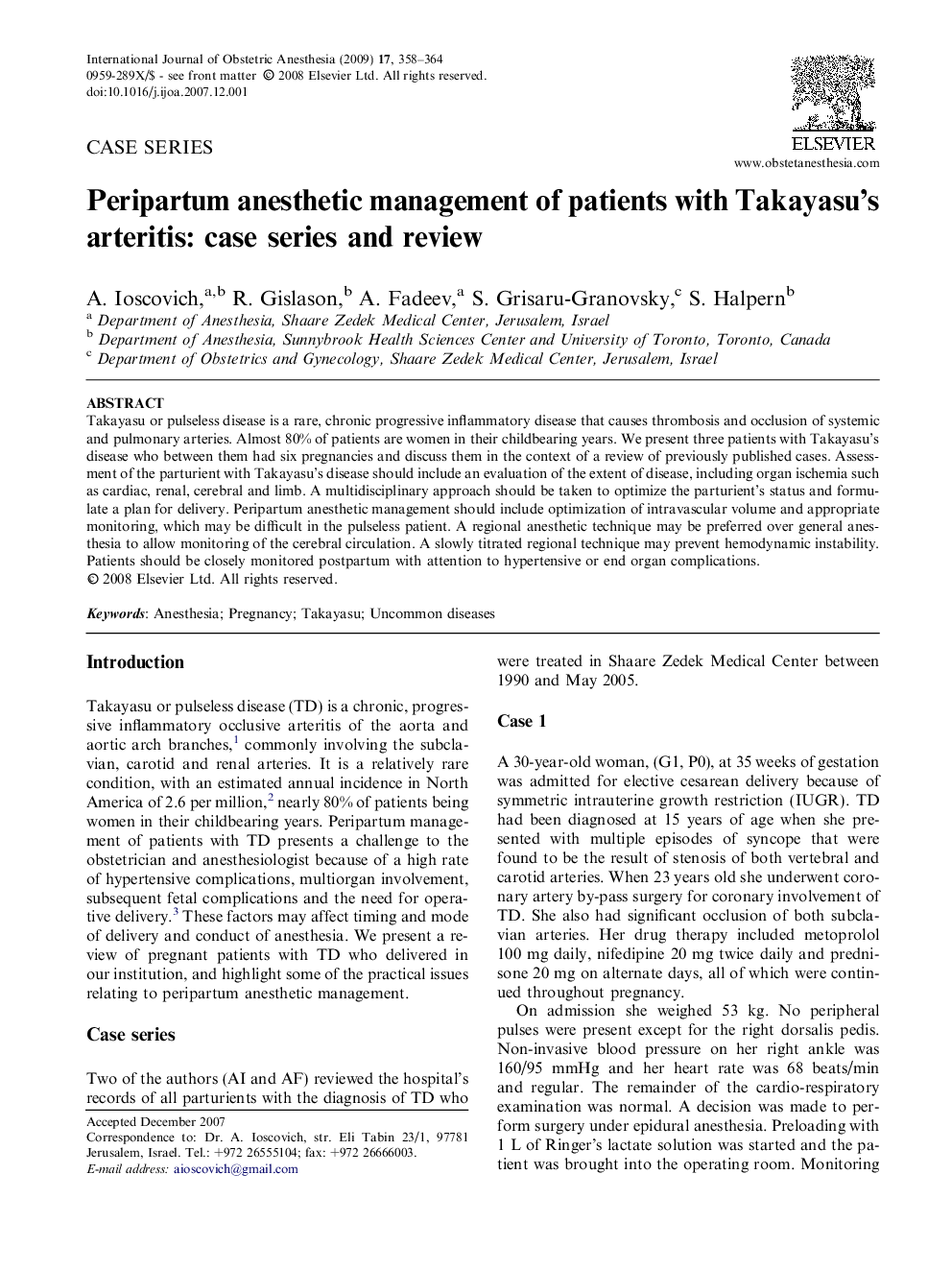| Article ID | Journal | Published Year | Pages | File Type |
|---|---|---|---|---|
| 2758368 | International Journal of Obstetric Anesthesia | 2008 | 7 Pages |
Takayasu or pulseless disease is a rare, chronic progressive inflammatory disease that causes thrombosis and occlusion of systemic and pulmonary arteries. Almost 80% of patients are women in their childbearing years. We present three patients with Takayasu’s disease who between them had six pregnancies and discuss them in the context of a review of previously published cases. Assessment of the parturient with Takayasu’s disease should include an evaluation of the extent of disease, including organ ischemia such as cardiac, renal, cerebral and limb. A multidisciplinary approach should be taken to optimize the parturient’s status and formulate a plan for delivery. Peripartum anesthetic management should include optimization of intravascular volume and appropriate monitoring, which may be difficult in the pulseless patient. A regional anesthetic technique may be preferred over general anesthesia to allow monitoring of the cerebral circulation. A slowly titrated regional technique may prevent hemodynamic instability. Patients should be closely monitored postpartum with attention to hypertensive or end organ complications.
